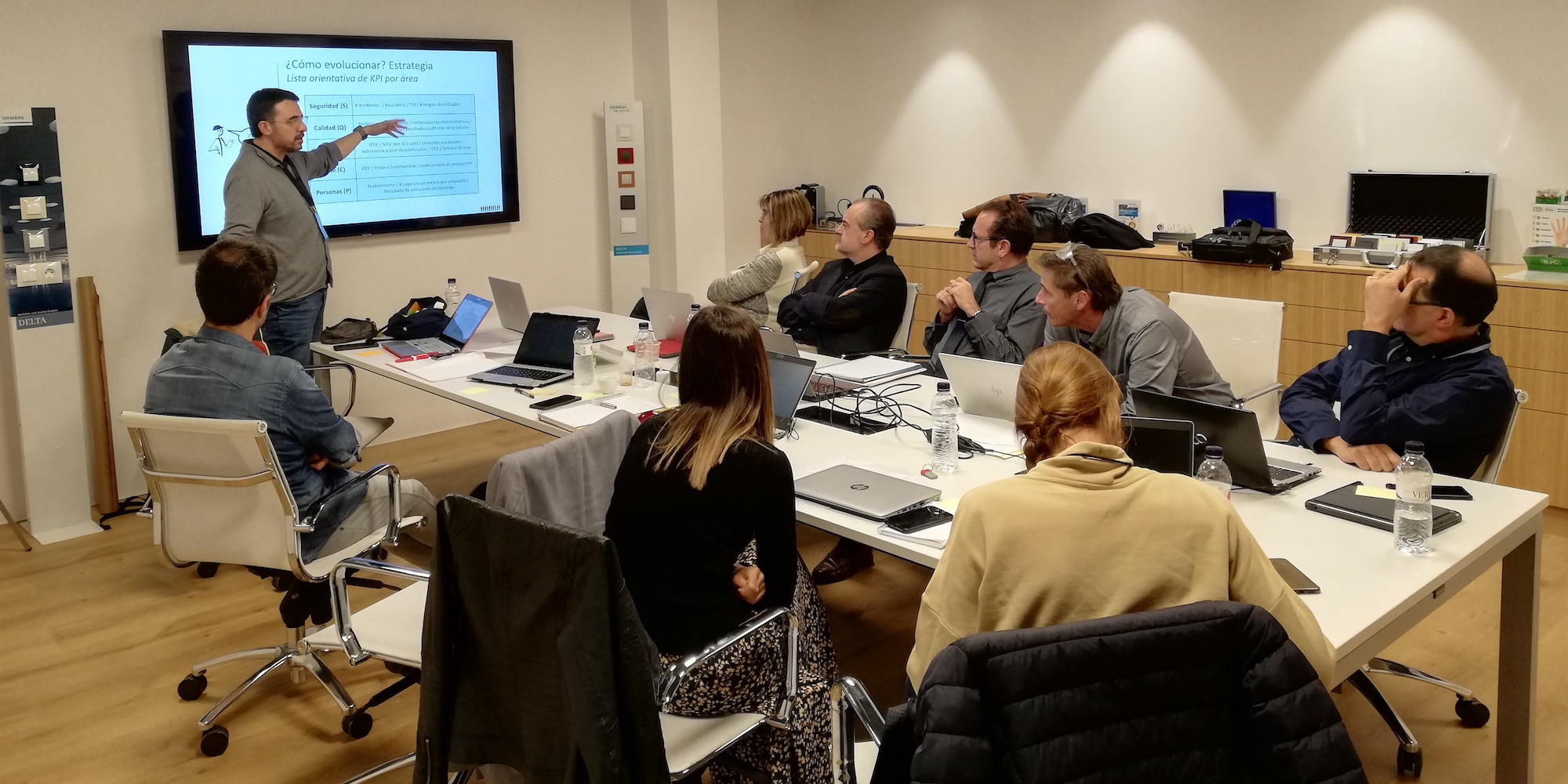
Lean transformations: failure and misconceptions
FEATURE – Drawing inspiration from his research into the causes of failure of transformations, the author discusses how these can directly be linked to the most common misconceptions on Lean Thinking.
Words: Néstor Gavilán Ferrer
After years spent studying and applying Lean Thinking, I have started to wonder why so many transformations start off with good results but then inevitably struggle to sustain their initial success. What I often see as a coach is organizations initiating change, introducing people to the methodology, achieving good results, only to then see their transformation fizzle out without leaders being capable of doing anything about it. Why is that? This seems particularly puzzling if we consider that the majority of organizations generally consider lean to be positive for the business.
This question encouraged me to further investigate this topic. To see if I could find out more about the percentage of transformations that fail and the reasons behind it, I decided to analyze the most recent and relevant literature on Lean Thinking – both case studies and theoretical papers.
After discovering that less than 10% of lean transformations are deemed to succeed and can be sustained over time, I tried to understand the most common causes of failure or success mentioned in the literature. I analyzed over 30 between articles, papers and books, and every time a cause appeared, I tallied it. I eventually identified 27 factors that can lead to both the success and failure of a lean transformation (success if they are present, failure if they are absent). Here they are:
- Involving employees and giving them the autonomy to improve and solve problems.
- Commitment from leadership and management team. Support to lean leadership.
- Conviction that lean is applicable to any sector/business function.
- Providing teams with lean capabilities and experience.
- A vision of business indicators to the middle- to long-term.
- Aligning business culture with the vision.
- Strategic vision.
- Clear communication of business objectives; transparency on important information and results achieved.
- Culture that spreads to all business functions.
- Funding (resources, time, coaches, experts, etc).
- A plan for sustainability (long term)
- Customer focus.
- Organizational structure.
- A value stream/supply chain vision vs an isolated view (local/department).
- Ownership by employees.
- An organization that learns from mistakes.
- Embracing lean as a cultural transformation, not a toolkit.
- Teamwork
- Starting with a pilot with significant results.
- External validation from consultants.
- Continuous evaluation of the progress of the lean transformation.
- Flexible response to demand variability.
- Trust relationship with suppliers.
- Leaders at the gemba (genchi genbutsu).
- Respect for people.
- Continuously improving the current condition.
- Maintaining stability in a changing environment.
Of course, this investigation provides us with the number of times these elements were mentioned in literature but doesn’t rank any of them by importance. The fact that an element – for example, the presence of leaders at the gemba – is only mentioned in the literature so many times doesn’t of course mean that it is any less important than those that feature more prominently in publications on lean. Still, the data gives us an indication of where we are in our understanding of lean transformations and a number of insights into the reasons they fail so often.

For the purpose of this article, we will focus on the Top 10 failure/success factors identified in the research.
WHAT THIS MEANS
One immediate consideration is that most of the factors in the Top 10 – if not all of them – are a responsibility of senior management. Isn’t it up to top leaders in the organization to, say, give employees autonomy, developing and communicating a vision, think strategically about the future of the business, or work to spread lean across the company?
Interestingly, all of these elements can be traced back to the many misconceptions that still exist about Lean Thinking, especially in organization that are starting out their journeys. So, let’s look at our Top 10 and see how each of these factors is linked to wrong ideas about lean that have developed over time.

For example, there is the idea that lean can be “done to people”, perhaps as a program implemented by consultants. As John Shook once said, “Lean is not lean if it doesn’t involve everyone”. With that in mind, giving employees the autonomy to solve problems and effect change (factor 1) should be seen as the most important prerequisite to the success of a transformation. Without an engaged front line that participates actively in the improvement, the heavy lifting is left to local leaders (or worse, external coaches) – with the results that as soon as they leave (because they go working somewhere else or, in the case of consultants, the project is over) the whole implementation comes crushing down. It’s critical we ensure that lean culture reaches all levels of the business, and that improvement isn’t pushed from top of the organizational chart down, but the other way around: we want management to cascade problems, front-line employees to come back with solutions on which they are, in turn, challenged and coached by management. Contribution means autonomy, but for it to happen, we need to inject transparency into the organization and start to speak openly about results and how they compare to our goals, and about the main gaps that need to be addressed (factor 8). Without this, there is no way we can develop the trust necessary to get people involved.
At the opposite end of the spectrum lies the wrong (and just as damaging) belief that management doesn’t need to get involved in the nitty gritty of the transformation, that they don’t need to “get their hands dirty” (factor 2). However, leadership lies at the heart of the Lean Transformation Framework and it is not enough for them to have an engaged front line and simply not be opposed to the transformation (the famous “green light” from the Board); indeed, leaders across the organization need to take on the responsibility to build the architecture of the lean transformation and the plan to execute the vision it embodies. There is another element to factor 2: lean leadership promotes a “new” type of management that informs our way of treating problems and interacting with people, and these sorts of behaviors have to be supported. (For a comprehensive discussion on the key traits leadership supportive of a lean transformation should have, check out this article.)
The third factor speaks to the age-old misconception that lean is a “manufacturing thing”. As a lean coach, I can’t count the times I have been told, during a training session, things like “This is not a production line” or “Our process is different”. When you move from manufacturing to support functions (factor 9) or even other sectors, from healthcare to restaurants, this argument only gets stronger. Even though, over the past three to four decades, Lean Thinking has been successfully applied to organizations in all kinds of sectors, this gross misinterpretation is still widespread.
Another common cause of failure that can be identified in the literature is a lack of lean capabilities in the team (factor 4). This relates to a couple of misunderstandings. First, once again, the idea that bringing in consultants to “do lean” is a viable approach. Coaching is fundamental, but outsourcing competencies means that you are not developing any knowledge and that the moment consultants walk out the door things will revert to the way they were before they came. The other wrong assumption here is that lean can be taught in a classroom: developing lean capabilities takes time and happens on the job, at the gemba. There is much more to people development than training! The whole architecture of the transformation should be looked at in terms of people capabilities – that’s the only way to make change sustainable. We need to transform the way we do things, not just ask for results without looking at how people might attain them.
Middle- to long-term KPIs (or lack thereof) is another element that can make or break a transformation (factor 5). Excessively focusing on the “here and now” – perhaps falling into the trap of seeing lean as a set of tools that are only good to get the process to perform the way you need it to, rather than a way to turn around the entire management system – is sure to lead to the failure of any lean change initiative. It’s critical to develop a long-term plan for where the organization is going – beyond the current year. What is our idea of business? Where are we headed? Part of applying lean is, of course, to turn on its head the way we run the organization day to day. To ensure the survival of the business, it is necessary to meet the urgent needs the company has every day – and lean can do a lot to help there. However, it’s important to remember that a transformation takes time and that, without a long-term commitment (and a good amount of patience), you won’t achieve more than low-hanging fruit.
To fulfil the promise of a lean transformation means to use lean to not only reach business goals, but also to think strategically (factor 7) about how the organization can thrive in the future. How do we get to the next level? What do we envisage for our future as a business? How do we ensure teams today are aligned with that vision? To successfully answer these questions means to constantly raise the bar and set new, ever more challenging objectives that will put the organization on a path of continuous learning and innovation. Again, if we believe that lean is nothing more than process improvement (or worse, cost cutting) we won’t be able to get very far. We need to unequivocally connect the lean culture we are developing with the vision we have for the business (factor 6), one more thing that a limited view of what lean is would not allow us to do.
The last factor in our Top 10 is tied to some managers’ reluctance to hire a change agent to kickstart a transformation. Their assumption is that there is no return on investment. While it’s true that such financial benefits are hard to see at first and only become visible in the medium- to long-term, hiring a change agent is recommendable, nonetheless. Together with the positive effects of kaizen (with results typically achieved at little to no cost for the organization), the work of the change agent to develop lean capabilities leads to exponential improvement and great benefit. So, the ROI of a change agent might be hard to see at first, but it is very much there. It’s also worth remembering that the role of a lean manager changes as the transformation evolves, going from spearheading improvements to simply coaching and empowering people. In other words, good lean managers work to make themselves unnecessary over time and are typically integrated in management positions once people become autonomous.
UNLOCKING THE SECRETS OF LEAN
As mentioned above, there are many more success/failure factors in this piece of research, and the ones we have discussed in this article aren’t necessarily the most important. They are, however, very telling.
For starters, they (and the related misconceptions we discussed) remind us that Lean Thinking is an elusive concept, which often means something different to different people. But they also leave us with a question: what can we do to avoid these mistakes? The successful transformations I have observed (and there are many) show us that it is possible to succeed in sustaining lean change, and we believe that the secret to avoiding the mistakes listed in this article (and many others) is to structure a transformation around the five dimensions of the Lean Transformation Framework.
Answer the key questions the Framework poses (“What is the problem we are trying to solve?”, “What is the work and how do we improve it?”, “How do we develop our capabilities”, “What management system and leadership behaviors do we need to support the transformation?”, and “What is our basic thinking?”) and you will be able to counter the negative effect of the misconceptions outlined in this piece, thus avoiding making the same mistakes so many organizations make.
THE AUTHOR

Read more


VIDEO - Dan Jones was one of the keynote speakers at this year's Lean Summit in The Netherlands. Here's a 15-minute excerpt of his talk, with some great insights into the state of lean thinking.


FEATURE – In this article, the author reflects on how his understanding of lean thinking evolved over time – as did the way he defined it.


NOTES FROM THE GEMBA – What’s kaizen for? Improving quality? Generating a flow of ideas? Challenging a method? All of the above, so long as the underlying goal is to make people’s lives easier.


FEATURE – This Siemens Group-owned medium-sized manufacturer of electrical low-voltage devices has been experimenting with hoshin kanri. In this article, they share their experience and lessons learned.

